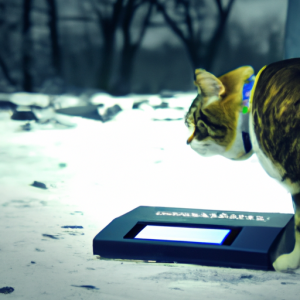The Risk of RATs: How Easily Can Mobile Devices Be Infected?
As technology continues to evolve, so do the threats that come with it. One such threat that has been gaining traction in recent years is the Remote Access Trojan (RAT), a type of malware that allows hackers to control your device remotely. This article will delve into the Risk of RATs, focusing on how easily Mobile Devices can be infected, and what you can do to protect yourself.
Understanding Remote Access Trojans (RATs)
Before we delve into the risks, it’s important to understand what RATs are. A Remote Access Trojan (RAT) is a type of malware that gives a hacker remote control over an infected device. Once installed, a RAT can allow a hacker to do anything from stealing personal information to activating the device’s camera or microphone without the owner’s knowledge.
The Prevalence of RATs
According to a report by cybersecurity firm Symantec, the use of RATs has been on the rise. In 2018, the company detected an increase of 8% in mobile ransomware, much of which was attributed to RATs. This trend is expected to continue as more people use Mobile Devices for sensitive tasks like banking and shopping.
Case Study: The Anubis Trojan
One notable example of a RAT is the Anubis Trojan. Discovered by researchers at ThreatFabric, Anubis is a banking Trojan that targets Android devices. It uses a variety of techniques to infect devices, including phishing emails and malicious apps. Once installed, it can steal login credentials, intercept SMS messages, and even record phone calls.
How Easily Can Mobile Devices Be Infected?
Mobile Devices can be infected with RATs in a number of ways. Here are some of the most common methods:
- Phishing emails: These are emails that appear to be from legitimate sources but contain malicious links or attachments. Clicking on these can lead to a RAT being installed on your device.
- Malicious apps: Some apps on the Google Play Store or Apple App Store may contain RATs. These apps often appear to be legitimate but are actually designed to infect your device.
- Drive-by downloads: These occur when you visit a malicious website that automatically downloads a RAT onto your device.
- SMS phishing: Also known as smishing, this involves receiving a text message with a malicious link. Clicking on the link can lead to a RAT being installed on your device.

Protecting Your Mobile Device from RATs
While the Risk of RATs is real, there are steps you can take to protect your mobile device. Here are some tips:
- Install a reliable security app: A good security app can detect and remove RATs from your device. Make sure to keep it updated to protect against the latest threats.
- Only download apps from trusted sources: Stick to the official app stores and avoid downloading apps from third-party sources.
- Be wary of unsolicited emails and texts: Avoid clicking on links or downloading attachments from emails or texts you weren’t expecting.
- Keep your device updated: Regularly updating your device’s software can protect against security vulnerabilities that RATs can exploit.
Conclusion
The Risk of RATs is a growing concern in today’s digital age. These malicious pieces of software can easily infect Mobile Devices, leading to a range of issues from stolen personal information to unwanted surveillance. However, by understanding what RATs are and how they work, and by taking steps to protect your device, you can significantly reduce your Risk of Infection.
Remember, the key to staying safe is vigilance. Always be cautious when downloading apps, clicking on links, or opening attachments, and make sure to keep your device and security software up to date. With these precautions, you can enjoy the convenience of your mobile device without falling victim to RATs.




